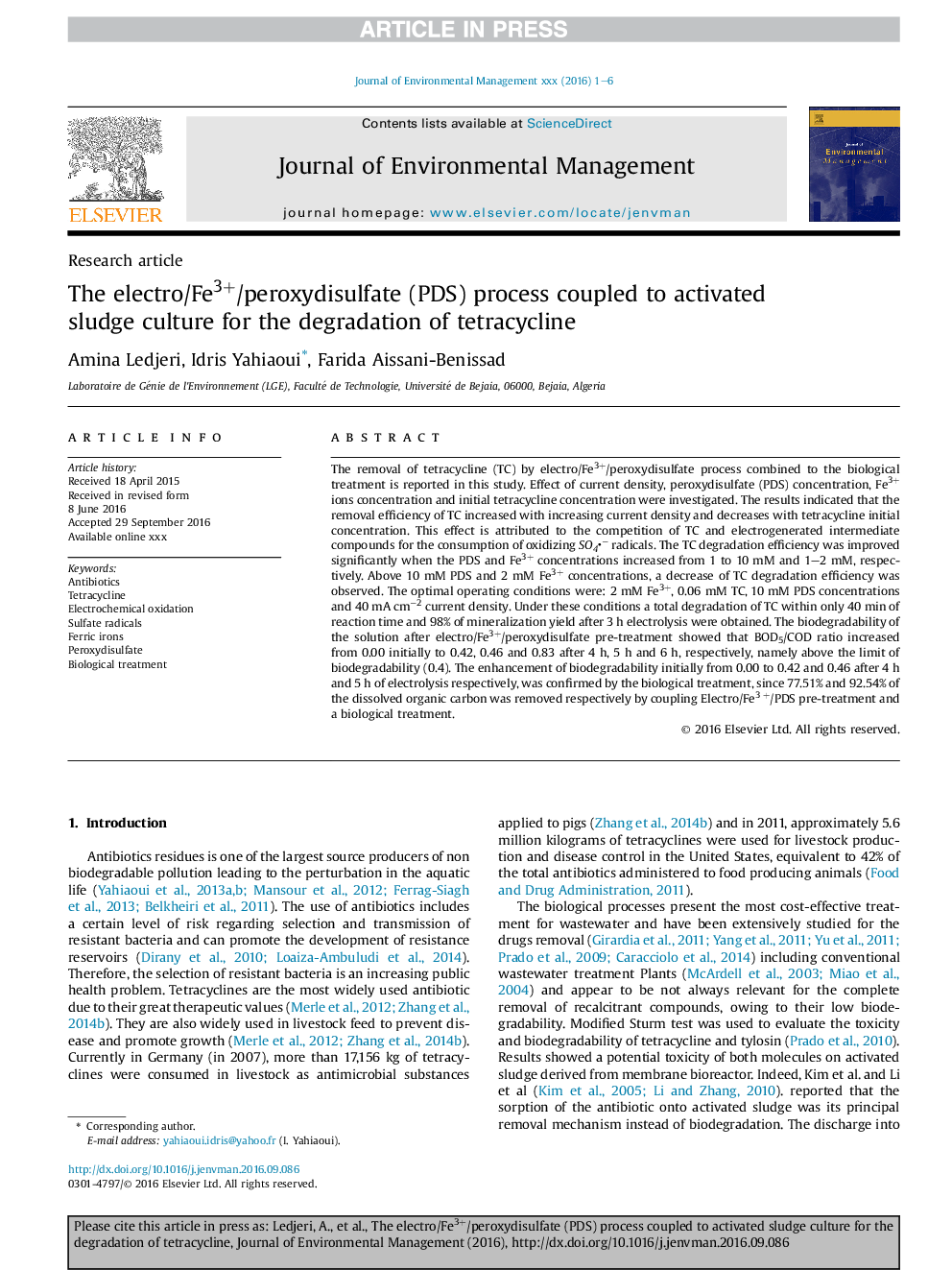| Article ID | Journal | Published Year | Pages | File Type |
|---|---|---|---|---|
| 5117090 | Journal of Environmental Management | 2016 | 6 Pages |
Abstract
The removal of tetracycline (TC) by electro/Fe3+/peroxydisulfate process combined to the biological treatment is reported in this study. Effect of current density, peroxydisulfate (PDS) concentration, Fe3+ ions concentration and initial tetracycline concentration were investigated. The results indicated that the removal efficiency of TC increased with increasing current density and decreases with tetracycline initial concentration. This effect is attributed to the competition of TC and electrogenerated intermediate compounds for the consumption of oxidizing SO4â radicals. The TC degradation efficiency was improved significantly when the PDS and Fe3+ concentrations increased from 1 to 10Â mM and 1-2Â mM, respectively. Above 10Â mM PDS and 2Â mM Fe3+ concentrations, a decrease of TC degradation efficiency was observed. The optimal operating conditions were: 2Â mM Fe3+, 0.06Â mMÂ TC, 10Â mM PDS concentrations and 40Â mAÂ cmâ2 current density. Under these conditions a total degradation of TC within only 40Â min of reaction time and 98% of mineralization yield after 3Â h electrolysis were obtained. The biodegradability of the solution after electro/Fe3+/peroxydisulfate pre-treatment showed that BOD5/COD ratio increased from 0.00 initially to 0.42, 0.46 and 0.83 after 4Â h, 5Â h and 6Â h, respectively, namely above the limit of biodegradability (0.4). The enhancement of biodegradability initially from 0.00 to 0.42 and 0.46 after 4Â h and 5Â h of electrolysis respectively, was confirmed by the biological treatment, since 77.51% and 92.54% of the dissolved organic carbon was removed respectively by coupling Electro/Fe3Â +/PDS pre-treatment and a biological treatment.
Keywords
Related Topics
Physical Sciences and Engineering
Energy
Renewable Energy, Sustainability and the Environment
Authors
Amina Ledjeri, Idris Yahiaoui, Farida Aissani-Benissad,
